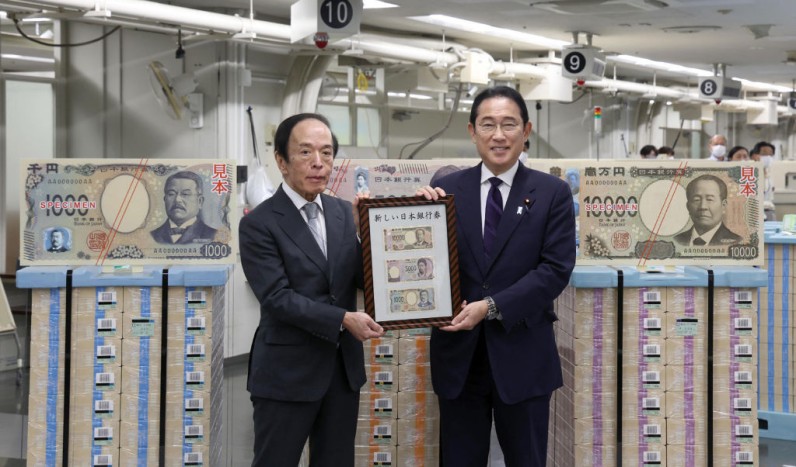The first new banknotes of Japan in 20 years have finally hit circulation on Wednesday, July 3. To deter counterfeiters, striking three-dimensional pictures of the founders of financial and female education institutions adorn the notes.
New Bills of Japan With Hologram Portraits
According to Reuters, Japanese Prime Minister Fumio Kishida announced at a special event that the new bills include the faces of individuals symbolizing Japan's capitalism, women's empowerment, and technological innovation.
According to Japan's National Printing Bureau, the notes' design is the first of its kind for paper currency, as they used printed patterns to create holograms of the pictures, which appear from various angles.
The new 10,000 yen banknote has the image of Eiichi Shibusawa (1840-1931), "the father of Japanese capitalism," who established Japan's first stock exchange and bank.
A pioneering medical scientist, Shibasaburo Kitasato (1853-1931), is featured on the new 1,000-yen note, while educator Umeko Tsuda (1864-1929) is shown on the new 5,000-yen bill. Tsuda was one of the first women to start a university in Japan.
Although Kishida emphasized that the hologram feature in the new bills would combat counterfeiting, the issue does not pose a significant threat in Japan.
Japan Forward reported that from a peak of 25,858 in 2004 to 681 in 2023, the number of counterfeit banknotes discovered by authorities significantly decreased.
By December 2023, 18.5 billion banknotes with a face value of 125 trillion yen were in circulation. The government intends to manufacture around 7.5 billion newly designed bills by the conclusion of the current fiscal year, adding to this total.

Start of Growth-Driven Economic Phase of Japan
Kishida added in his speech that this shift coincides with the economy of Japan entering a growth-driven period after a 30-year hiatus, according to Reuters.
Recent economic figures reveal that key corporations are raising worker compensation at the quickest pace in 33 years. However, persistent inflation, driven by the rapid depreciation of the yen currency, keeps the spending and business outlook sluggish.
Shift Towards Digital Currencies
While current bills will continue to be accepted, many establishments, including train stations, parking lots, and ramen restaurants, are also rushing to install more advanced payment systems.
Part of the government's effort is encouraging companies and customers to use less cash and move toward digitalization. Even though the Bank of Japan has played around with digital currencies, the Japanese government has not yet decided to launch a digital yen.







Join the Conversation